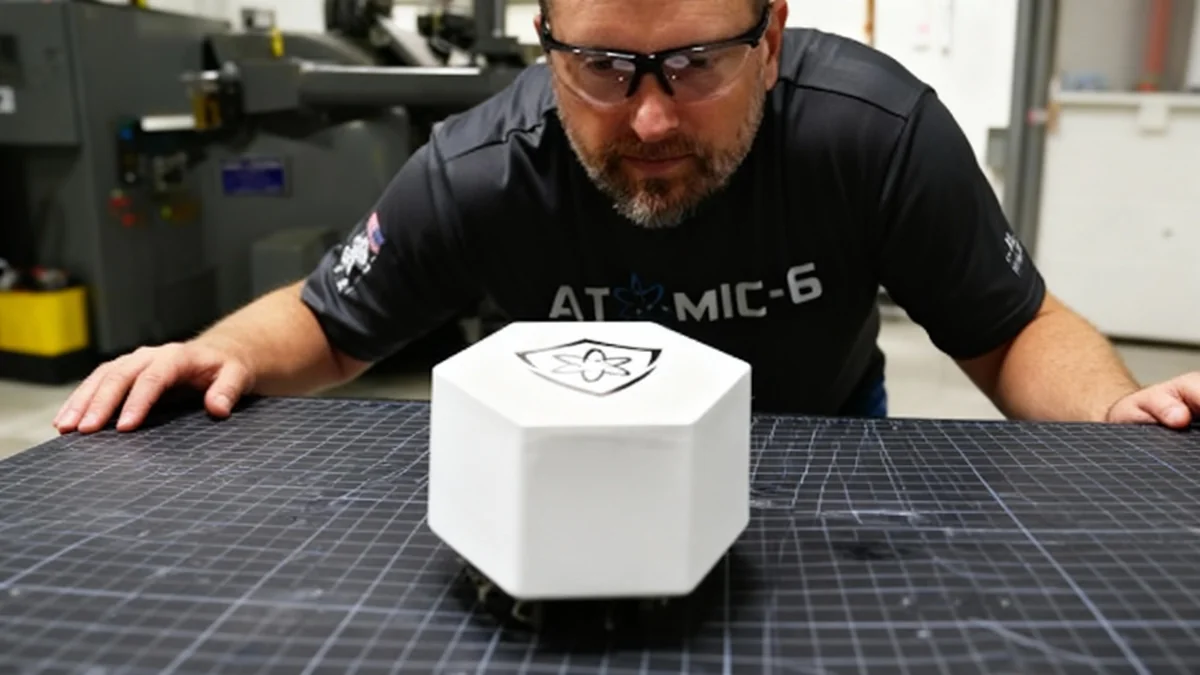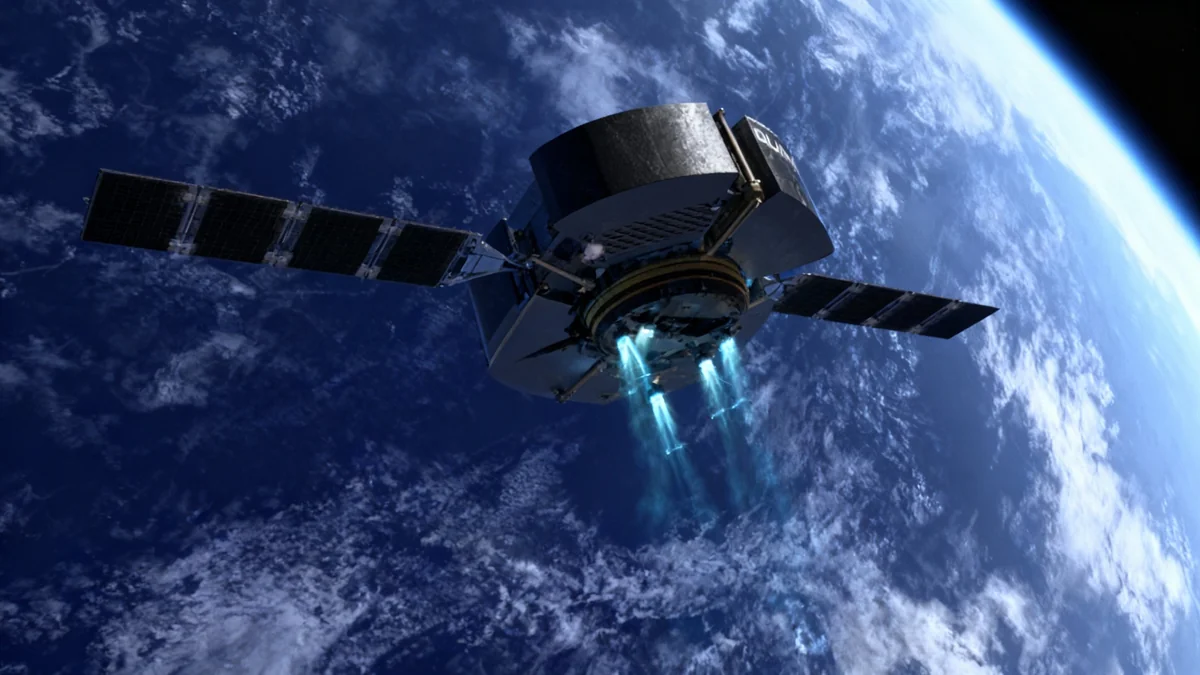A Georgia-based company has developed a new type of shielding designed to protect spacecraft from high-velocity orbital debris. The material, called Space Armor, is the first of its kind to be transparent to radio frequencies, allowing satellites to maintain communication while being protected.
The new composite tiles, introduced by advanced manufacturer Atomic-6, also address a critical flaw in traditional shielding by not creating additional dangerous fragments upon impact. This innovation aims to enhance the safety of both astronauts and the growing number of satellites in orbit.
Key Takeaways
- Atomic-6 has launched Space Armor, a new composite shielding for spacecraft.
- It is the first orbital debris shield that allows radio frequency (RF) signals to pass through, protecting communication equipment.
- Unlike traditional metal shields, it is designed to be fragmentation-resistant, preventing the creation of more space junk.
- The material is lighter and thinner than existing solutions and comes in two protection levels for different mission requirements.
The Growing Danger in Earth's Orbit
Millions of tiny, untraceable particles orbit the Earth at extreme speeds. Traveling faster than 7 kilometers per second, or nearly 16,000 miles per hour, even a small piece of debris can cause catastrophic damage to a satellite or space station.
An impact from these hypervelocity particles can penetrate fuel tanks, tear through critical electronics, or compromise the integrity of a space suit. As more satellites are launched, the density of this debris increases, raising the risk of collisions for everyone operating in space.
Understanding the Kessler Syndrome
The Kessler Syndrome is a theoretical scenario in which the density of objects in low Earth orbit becomes so high that collisions between objects cause a cascade effect. Each crash generates more space debris, which in turn increases the likelihood of further collisions, potentially rendering space activities and the use of satellites unfeasible for generations.
Limitations of Traditional Shielding
For decades, spacecraft have relied on a technology known as the Whipple shield, first conceived in the 1940s. These shields typically use multiple layers of metal, like aluminum, to break up and stop incoming projectiles.
However, this legacy technology has significant drawbacks. The metallic layers are heavy, which increases launch costs. They also block vital radio signals, forcing engineers to leave sensitive communication equipment like antennas and radomes exposed and vulnerable.
A more serious issue is the creation of secondary debris. When a projectile hits a metal shield, the shield itself can fragment, ejecting a cloud of new, harmful particles back into orbit. This process contributes to the very problem the shields are meant to solve.
A Breakthrough in Materials Science
Atomic-6's Space Armor was designed to overcome these challenges. The composite material is both strong enough to stop hypervelocity impacts and permeable to radio frequencies. This allows for the complete protection of a satellite, including its communication systems, for the first time.
"This is a big deal," said Trevor Smith, CEO of Atomic-6. "We made the first radomes that can stop orbital debris. You don't have to sacrifice communications to protect your spacecraft anymore. This little composite tile preserves mission-critical functions, thereby protecting spacecraft, space stations, and people in orbit from increasingly prevalent, yet invisible threats."
The company demonstrated the material's effectiveness in a side-by-side comparison with a traditional aluminum shield. When struck by a projectile moving at over 7 km/s, the Space Armor tile stopped it with almost no byproducts. The aluminum shield, in contrast, shattered, creating fragments larger than the initial projectile and sending damaging spall through its backside.
By the Numbers: Orbital Debris
- Speed: Orbital debris travels at speeds up to 17,500 mph (~7.8 km/s).
- Quantity: An estimated 100 million pieces of debris larger than 1mm are in orbit.
- Risk: Over 90% of all debris in Low Earth Orbit (LEO) is untraceable and smaller than 10 cm.
Two Levels of Protection
Recognizing that different missions have different needs, Atomic-6 has developed two versions of the technology. Both are available in either RF-permeable or RF-blocking configurations.
The product line includes:
- Space Armor Lite: This version is designed to withstand impacts from debris up to 3mm in diameter. This category accounts for all untraceable debris and more than 90% of all objects in Low Earth Orbit.
- Space Armor Max: Built for the most critical applications, this variant can resist impacts from objects up to 12.5mm. It is rated for protecting human-occupied structures like space stations.
Both options are engineered to minimize mass and storage volume while reducing the risk of creating post-impact ejecta. This makes them a critical advantage for both manned and unmanned missions where weight and reliability are paramount.
Enhancing Space Stewardship
The introduction of fragmentation-resistant shielding marks a significant step toward more responsible stewardship of the space environment. By preventing the creation of new debris, technologies like Space Armor can help mitigate the risk of the Kessler Syndrome and ensure that Earth's orbit remains usable for future generations.
This new shielding technology joins Atomic-6's existing portfolio of space-focused products, which includes its Light Wing solar array. The company states its goal is to offer a decisive edge in power and protection for U.S. military, allied, and commercial space operators navigating an increasingly crowded orbital environment.





